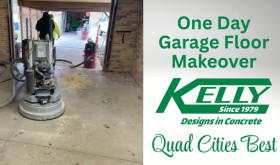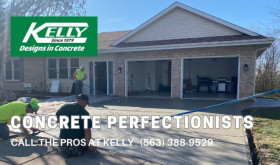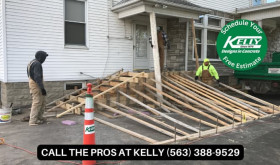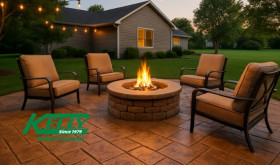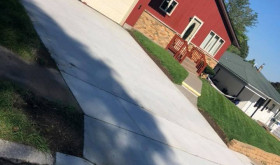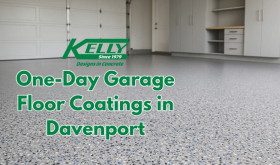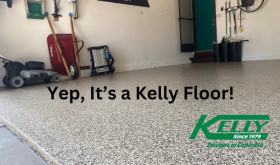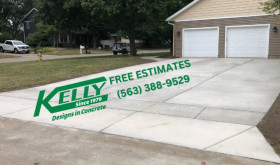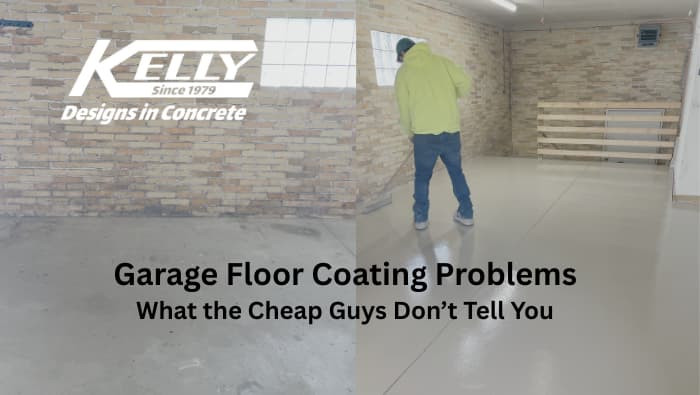
Garage Floor Coating Problems: What the Cheap Guys Don’t Tell You
We’ve all heard it: “You get what you pay for.” That applies to garage floor coatings too—especially when you’re staring at peeling flakes, bubbling epoxy, or hot tire marks that make your new floor look ten years old after six months.
At Kelly Designs in Concrete, we’ve been called in more times than we can count to fix DIY disasters or cut-rate contractor jobs that just didn’t hold up. So here it is—what the budget guys won’t tell you (but you need to know).
1. They Skip the Most Important Step: Surface Prep
You can’t slap a coating on a dusty, stained, or smooth-as-glass floor and expect it to last. Yet that’s exactly what a lot of guys do to save time and money.
Proper prep = bonding strength.
At Kelly Designs, we mechanically grind the surface to open the pores and ensure the coating fuses to the concrete—not just sticks to the top like a cheap sticker.
⚠️ Watch for red flags: If they don’t mention concrete profiling or diamond grinding, run.
2. They Use Low-Solids or Water-Based Epoxy
The cheaper the product, the faster it fails.
Those glossy kits from the big-box store? Or the “two-car garage special” from the guy with no website? They’re often low-solids coatings that:
- Wear out in months
- Absorb stains
- Turn yellow from UV
We use industrial-grade, high-solids polyurea/polyaspartic systems that:
- Cure harder
- Resist chemicals
- Don’t flake or peel under hot tires
3. They Don’t Fix Cracks or Moisture Issues First
A lot of installers don’t bother checking for:
- Hairline cracks that need bridging
- Moisture vapor transmission
- Expansion joint repair
Those issues don’t disappear under a coat of epoxy—they show up louder later as:
- Bubbling or blistering
- Delamination
- Flaking at seams
✅ At Kelly Designs, every job starts with a full slab assessment before we even open a bucket.
4. They Promise “One Day” Without the Right System
“One-day garage coatings” are real—but only when the system is designed for it, and the installer knows what they’re doing. Cheap providers cut corners:
- Rushing cure times
- Skipping base coats
- Using fast-cure topcoats with no UV stability
We use proven multi-layer systems that cure fast and last, with broadcast flake and top-tier sealing—done right in 1–2 days.
5. They Disappear After the Job
The worst part? Many of these “budget” contractors:
- Don’t warranty their work
- Vanish when things go wrong
- Subcontract out and dodge accountability
🔨 We stand behind every floor we coat—because reputation matters, and we’ve had ours for over 40 years.
What a Proper Garage Floor Coating Should Look Like
A premium coating should:
- Have a flawless, even finish
- Feel solid underfoot (not tacky or rough)
- Resist stains, hot tire pickup, and peeling
- Last for years with minimal maintenance
Need proof? Check out our recent project in North Davenport—before: cracked and oil-stained; after: flawless, sealed, and showroom-worthy.
Final Thoughts: Don’t Settle for a Floor That Won’t Last
Garage floors take a beating in Iowa—snowmelt, salt, tools, tires. If you want a coating that actually performs, invest in one that’s built to handle it.
Kelly Designs in Concrete delivers professional-grade systems installed by experienced pros who know Iowa concrete. We don’t skip steps, and we don’t hide problems.
📞 Ready for a quote?
Contact us today to see what your garage floor could look like.
FAQ
- Q: How long should a garage floor coating last?
- A: With proper prep and high-quality materials, you can expect 10–15 years or more.
- Q: Can you fix a peeling or bubbling coating?
- A: Yes—but we often have to grind down the old coating and start fresh.
- Q: What’s better—epoxy or polyaspartic?
- A: Polyaspartic is faster-curing, more UV stable, and more durable overall—especially for Midwest garages.


